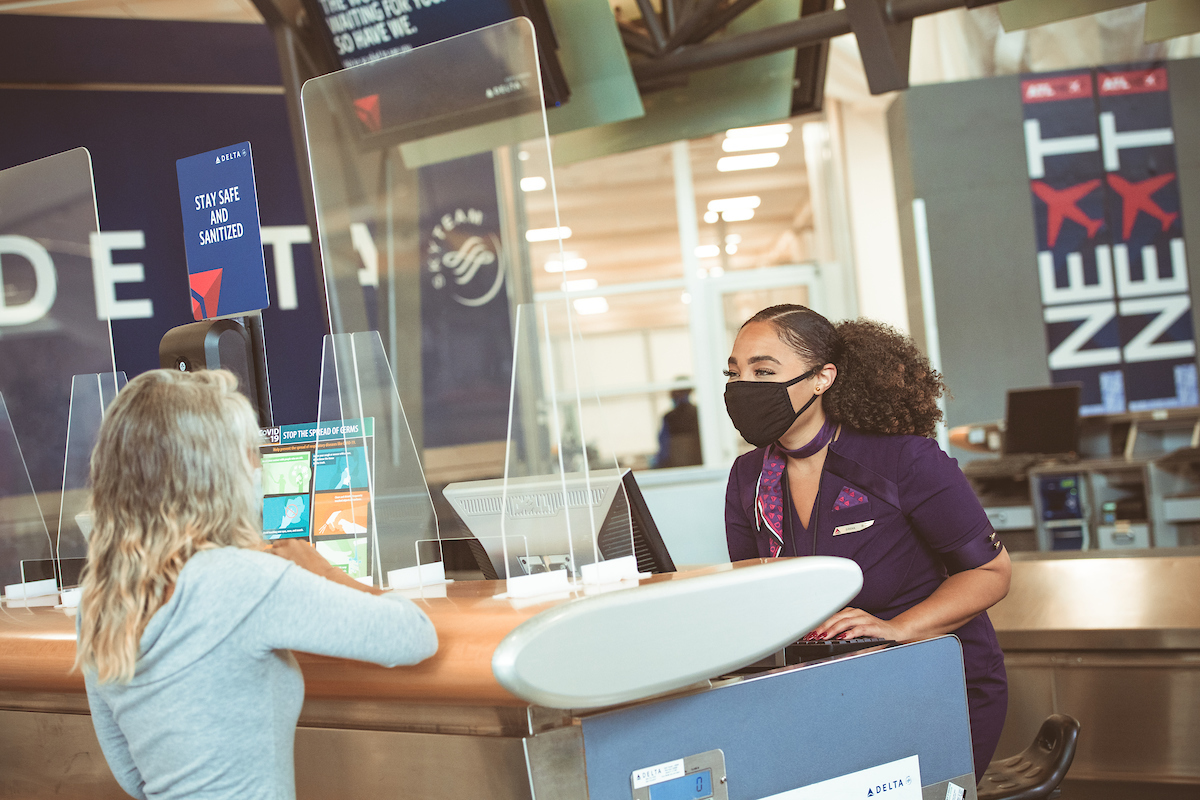Delta Air Lines Aims to Raise Fares in 2022

Photo Credit: Delta Air Lines is slowing its recovery to hopefully raise fares in 2022. Delta Air Lines
Delta Air Lines management left investors and analysts with one clear statement on next year: Don't get too excited. The Atlanta-based carrier's passenger capacity recovery will slow and that will in turn drive elevated cost growth but, hey, at least there will be profits.
"It will be a recovery year, but it will be a profitable recovery year," Delta CEO Ed Bastian said in his opening remarks at the airline's investor day on Thursday. As part of that return to the black, Delta plans to only recover passenger capacity to 90 percent of 2019 levels — lower than at the trio of American Airlines, Southwest Airlines, and United Airlines, though American and United have yet to update their pre-Omicron variant outlooks — while forecasting unit cost excluding fuel growth of 7-10 percent year-over-three-years.
But Wall Street analysts were quick to see the upside of Delta's outlook: Less capacity will likely mean higher fares that translate to, as Bastian put it, "meaningfully profitable" financial performance.
MKM Partners analyst Conor Cunningham described what Delta is doing in a report as "slowing growth to take more control of pricing." Higher fares in 2022 would be a "positive" for the carrier as well as the industry, he added.
Average U.S. airfares stood at $299.93 in the second quarter, according to the Bureau of Transportation Statistics. That was down 16 percent compared to 2019, but up 15 percent from the second quarter.
The outlook is a bit of a return to normalcy for Delta. The airline was known for its profitable, if measured, growth during the decade leading up to Covid-19 pandemic. During that time, it focused on initiatives that boosted revenues — like fare segmentation, and replacing single-class regional jets with dual-class aircraft — without solely adding news flights. And, as imitation is the sincerest form of flattery, these initiatives were later employed by American and United.
But that does not mean Delta is out of the Covid woods yet. For one, Omicron "will be the dominant strain [in the U.S.] over the next couple weeks ... We know it will delay the international recovery, probably by three to four months," said Bastian. He added that the airline has yet to see a "discernible" impact on domestic bookings from the latest variant.
That uncertainty has the carrier building flexibility — both up and down — into its summer schedule. Delta has published transatlantic schedules that see it recovering to roughly 85 percent of 2019 capacity. "If this recovery pushes off, we will not fly the schedule we’ve published this summer," President Glen Hauenstein said Thursday. He added that he believes there will be strong transatlantic demand — a market that many global carriers are using as an anchor for 2022 schedules — this summer. Delta's domestic capacity is forecast to recover to 2019 levels by the middle of 2022.
When business travelers return is another question for 2022, and one that Bastian said "no one knows" the answer to. Despite not knowing, he did outline Delta's assumptions for the recovery of this lucrative segment: Roughly 90 percent of what was defined as "corporate travel" pre-pandemic will come back by 2023. The unknown is how many new "business" trips the pandemic created; for example, the former office worker who now works remotely but needs to return to the office once a month, or those with flexible work policies that now couple working with leisure trips.
"We're going to have more remote work opportunities [and] more flexible work patterns," said Bastian. "All of that's going to enable mobility. All of that's going to feed into travel, some with business, some of it new forms of travel."
That outlook has Delta bullish for the medium- to long-term. By 2024, it anticipates more than $50 billion in annual revenues, operating margins in the "mid teens," and unit costs excluding fuel growth in the "low single digits." To put that in perspective, in 2019 the carrier generated $47 billion in revenues, had a pre-tax margin of 13.2 percent, and CASM-ex growth of 2 percent. Capacity and the airline's fleet count are also forecast to be higher than they were before the crisis.
Delta "emphasized how little Covid is anticipated to impair its longer-term structural attributes," J.P. Morgan airline analyst Jamie Baker wrote after the event.
Updated with U.S. Bureau of Transportation Statistics airfare data.
